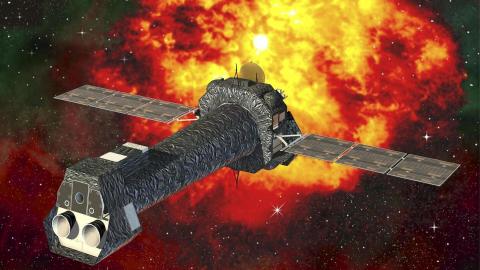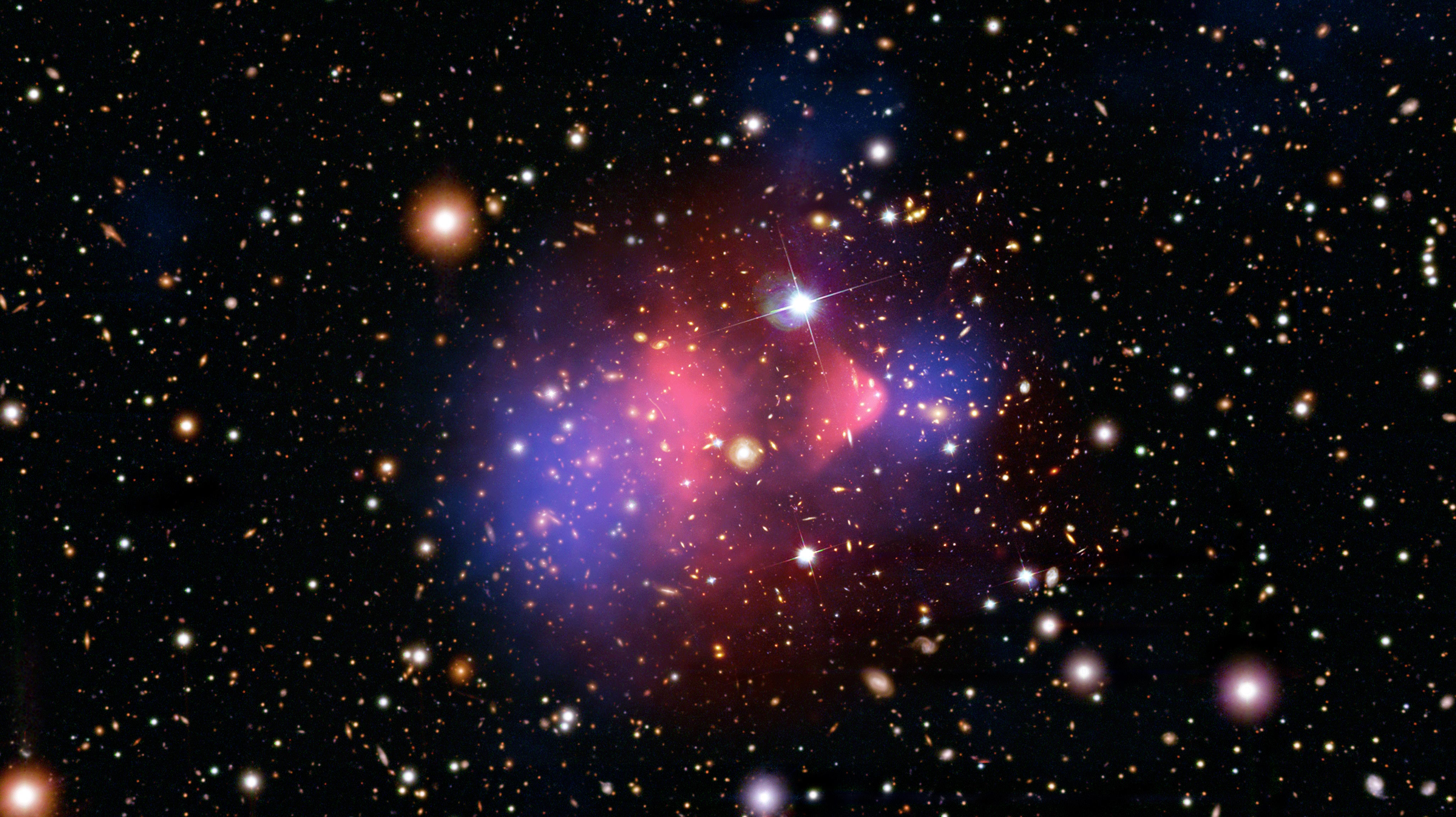Dark matter axions possibly found near Magnificent 7 neutron stars

Credit: D. Ducros; ESA/XMM-Newton, CC BY-SA 3.0 IGO
A study tantalizingly promises a possible location for new elementary particles called axions, which may also constitute the elusive dark matter. A team led by a theoretical physicist from the U.S. Department of Energy’s Lawrence Berkeley National Laboratory (Berkeley Lab) has pinpointed axions as the potential source of the high-energy X-rays coming out of a cluster of neutron stars called the Magnificent Seven.
Axions were first theorized as fundamental particles as far back as the 1970s but have yet to be directly observed. In a fun fact, the idea for the name “axion” came to the theoretical physicist Frank Wilczek from a laundry detergent brand. If they exist, they’d be produced in the core of stars, converting into photons (particles of light) upon encountering electromagnetic fields. Axions would likely have small masses and come into contact with other matter quite rarely and in a way that’s hard to detect.
They may also be responsible for dark matter, which could comprise about 85% of the known universe but is also yet to be seen. We think we know about it from its gravitational effects. If axions are real, they could account for this “missing” mass of the universe. Astronomical observations tell us that visible matter, including all the galaxies with their stars, planets, and everything else we can conceive of in space is still less than one sixth of the total mass of all of the universe’s matter. Dark matter is thought to be making up the rest. So finding it and finding axions could be transformative for our understanding of how the universe really works.
The new paper from Berkeley Lab proposes that the Magnificent Seven, a group of neutron stars that’s hundreds of light-years away (but relatively not so far), may be a perfect candidate for locating the axions. These stars, coming into existence as the collapsed cores of massive supergiant stars, have very strong magnetic fields and feature an abundance of X-rays. They are also not pulsars, which give off radiation at varying wavelengths and would likely obscure the X-ray signature the researchers spotted.
The study utilized data from the European Space Agency’s XMM-Newton and NASA’s Chandra X-ray telescopes to discover high levels of X-ray emissions from the neutron stars.
Benjamin Safdi, from the Berkeley Lab Physics Division theory group which led the study, said they aren’t saying yet they found the axions but are feeling confident the Magnificent Seven X-rays are a fruitful place to look.
“We are pretty confident this excess exists, and very confident there’s something new among this excess,” Safdi said. “If we were 100% sure that what we are seeing is a new particle, that would be huge. That would be revolutionary in physics.”
Are Axions Dark Matter?www.youtube.com
Postdoctoral researcher Raymond Co from the University of Minnesota, who was also involved in the study, confirmed that “It is an exciting discovery of the excess in the X-ray photons, and it’s an exciting possibility that’s already consistent with our interpretation of axions.”
Building upon this research, the scientists also plan to use space telescopes like NuStar to focus on the X-ray excesses as well as to examine white dwarf stars, which also have strong magnetic fields, making them another possible location for the axions. “This starts to be pretty compelling that this is something beyond the Standard Model if we see an X-ray excess there, too,” said Safdi.
Besides Berkeley Lab, the current study also involved support from the University of Michigan, the National Science Foundation, the Mainz Institute for Theoretical Physics, the Munich Institute for Astro- and Particle Physics (MIAPP), and the CERN Theory department.
Check out the study published in Physical Review Letters.





